New Sculpture by Anish Kapoor in New York City
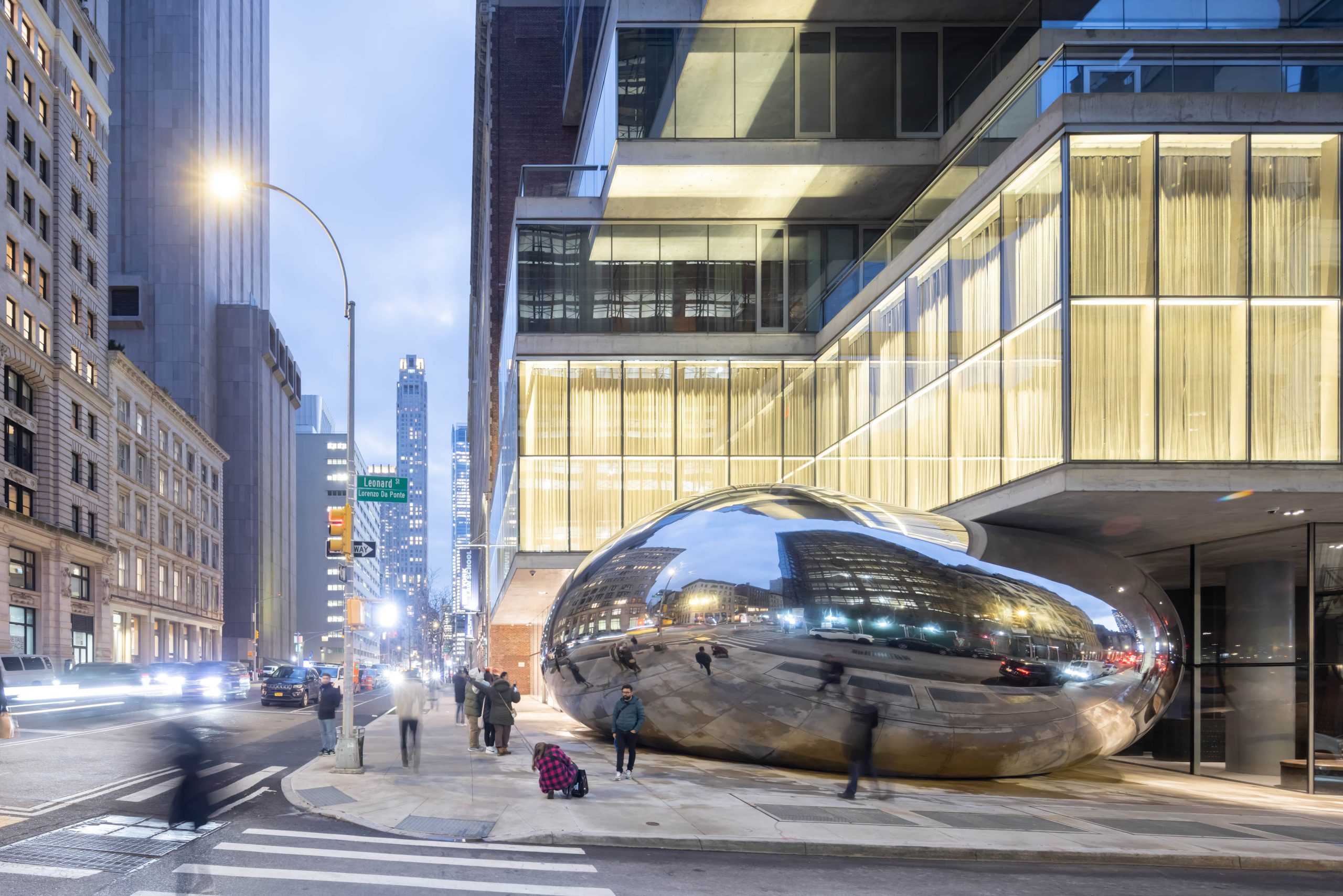
Billboard
Skyscrapper
Halfpage
On January 31st, 2023, the first permanent artwork by Anish Kapoor in New York City opened to the public. The bean-shaped structure has drawn praise and criticism alike. Read more about the project and the adjacent Jenga Tower here.
A new art highlight in Tribeca by Anish Kapoor
British-Indian sculptor Anish Kapoor has created his first permanent public artwork in New York City. The piece, yet to be titled, is located at 56 Leonard Street in Tribeca. It is 14 metres long, almost 6 metres tall and weighs 40 tonnes. Its appearance is similar to the famous Cloud Gate or “The Bean” in Chicago, the artists’ most famous work (2006). The ArcelorMittal Orbit in London’s Olympic Park (2012) and New York City’s Sky Mirror (2006) are other examples of Sir Anish Mikhail Kapoor’s art. The artist was born in 1954 in Mumbai.
The sculpture, unveiled on January 31st, 2023, is nestled partially under the Jenga Tower residential building designed by Herzog & de Meuron. It sits on the pavement at the base of the tower, giving the appearance of being squeezed under one of the cantilevered apartments. This interaction with the building gives the sculpture a sense of artwork. According to the developers, Anish Kapoor has created an “unprecedented collaboration between sculpture and architecture”.
Commissioned 15 years ago, a combination of economic slowdown, the pandemic, and technical difficulties has delayed the construction. Now, Anish Kapoor’s sculpture is open to the public. It has already become a favourite selfie spot for the many art-lovers in the gallery district Tribeca. One of its nicknames is “mini-Bean” because it is around 3.6 metres shorter than The Bean in Chicago.
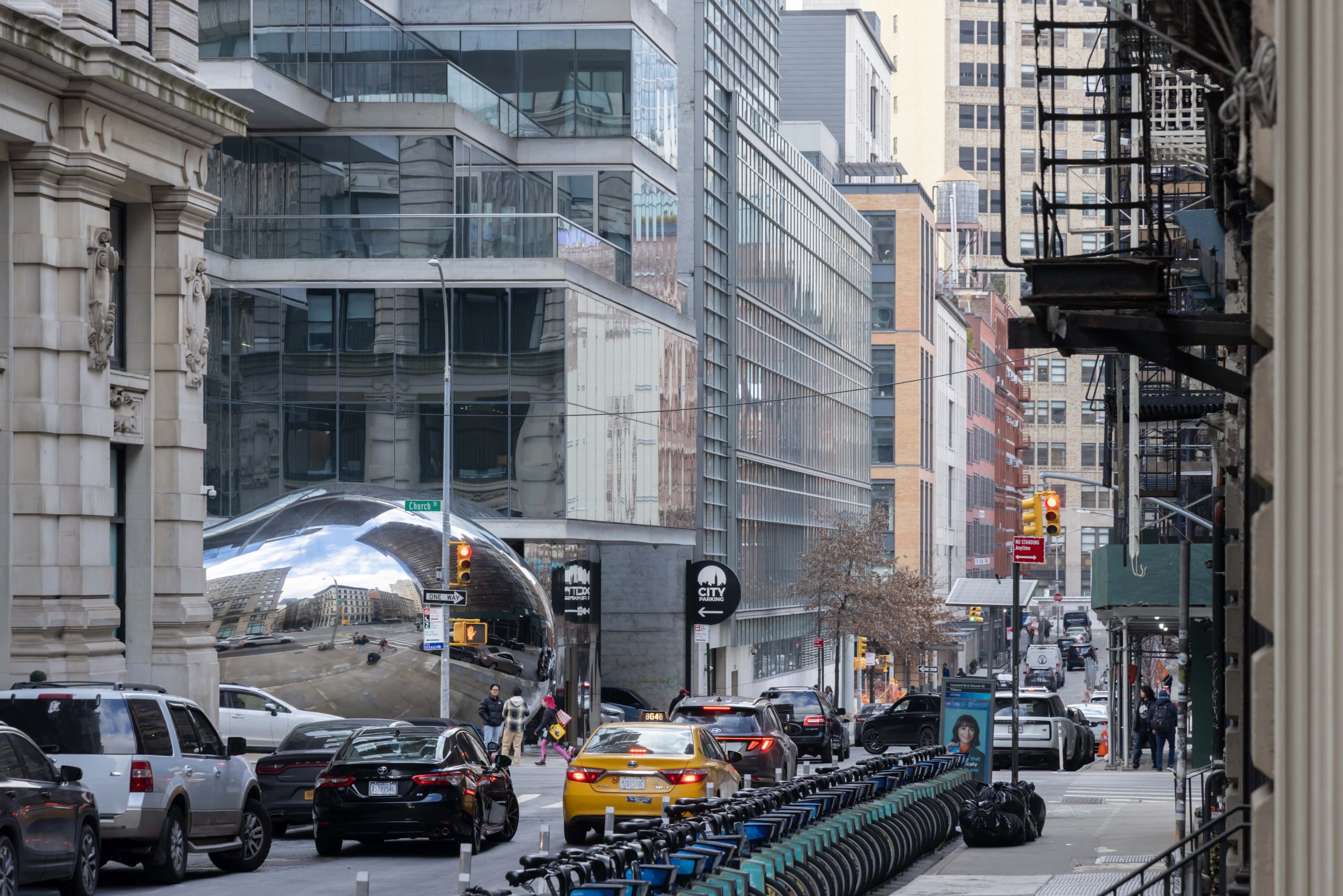
Soft and ephemeral
Anish Kapoor has said this about his new work: “The city can feel frenetic, fast, and hard, imposing architecture, concrete, noise. My work, at 56 Leonard Street, proposes a form that though made of stainless steel is also soft and ephemeral. Mirrors cause us to pause, to be absorbed and pulled in a way that disrupts time, slows it down perhaps; it’s a material that creates a new kind of immaterial space.“
With his sculpture, the artist contributes to the identity of the city and of Tribeca in particular. The bean-shaped artwork is one of many pieces in recent years that engage with the audience outside of museums. Similarly, Ai Weiwei and other sculptors have brought artwork to the public realm.
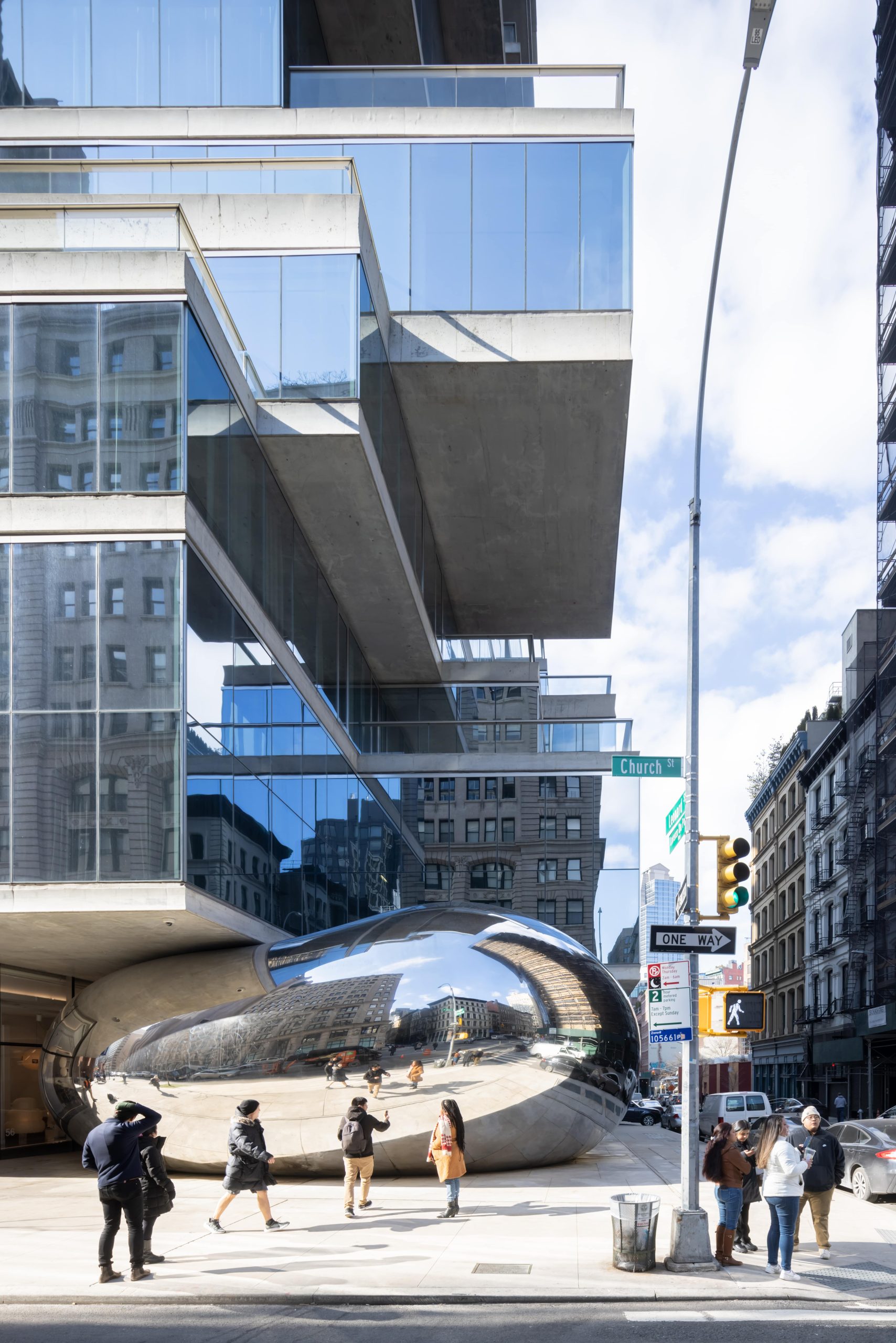
The Jenga Tower by Herzog & de Meuron
To understand Anish Kapoor’s new sculpture, it is necessary to take a closer look at the Jenga Tower building at 56 Leonard Street. Studios Herzog & de Meuron and Hill West Architects present a tower of stacked individual housing units, which quickly resulted in the “Jenga Tower” nickname. The building consists of shifting floor slabs which create cantilevers and balconies. This results in multiplied space for the residents.
Despite its size, the variation of shapes gives the tower an individual and almost intimate character. The base of the building responds to the identity of Tribeca by showing differently sized units to reflect the different neighbourhood scales. The top of the balancing tower has an undulating shape to merge with the sky. With a total of 57 stories, the skyscraper stretches up 250 metres, making it the 35th tallest building in New York City.
By the way: Read a New York City portrait here.
Jenga Tower is designed from the inside out, thus giving a specific identity to each of the 145 apartments. Depending on the individual vantage point and perspective, the appearance of the Jenga Tower varies greatly. As one of many luxury residential towers in the city, 56 Leonard Street also offers beautiful views across the city. With Anish Kapoor’s artwork, the building becomes more accessible and noticeable to the public passing at ground level.
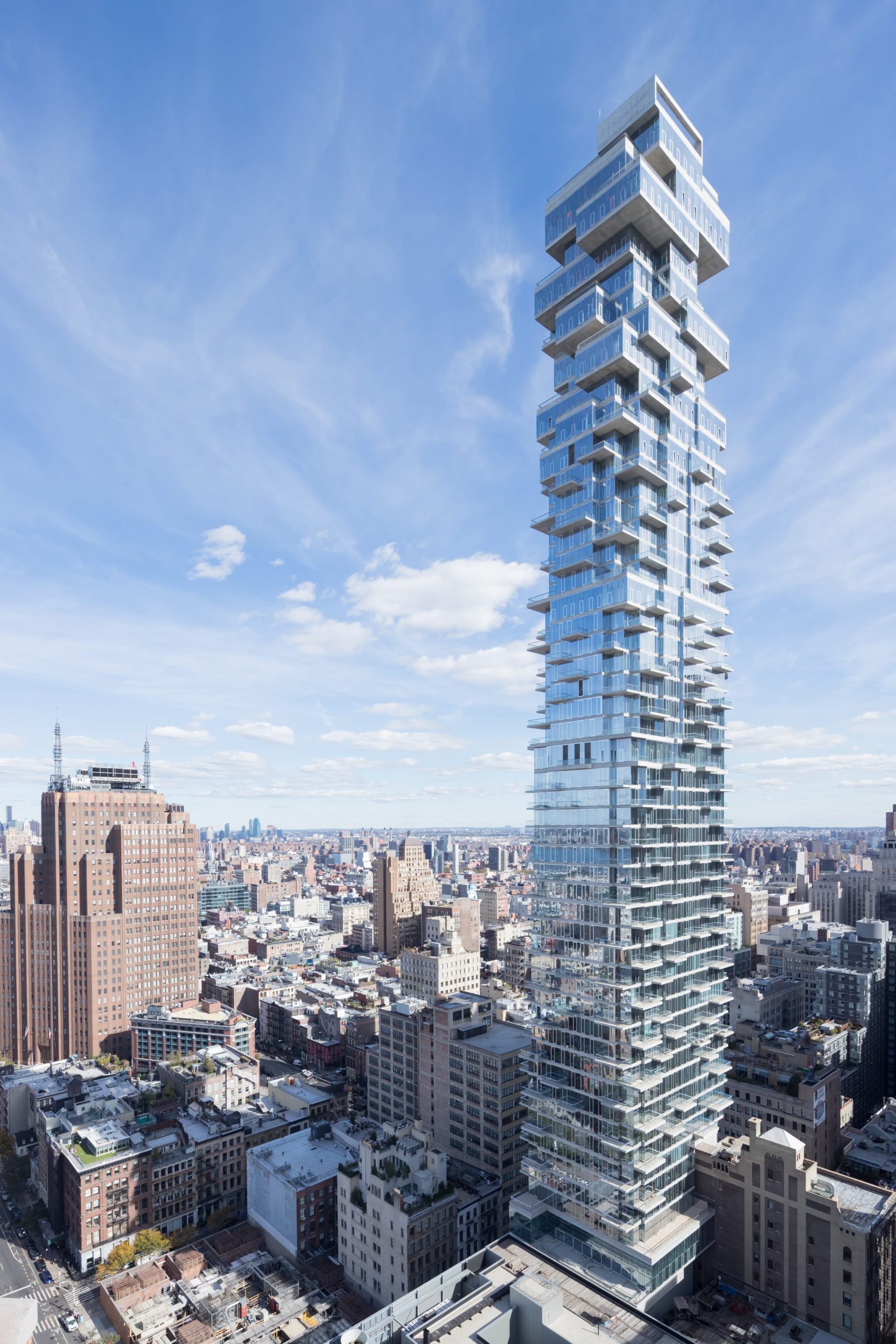
Criticism of Anish Kapoor’s mini-Bean
The shiny, bulbous “mini-Bean” sculpture in Tribeca has already received a lot of coverage. With a cost point somewhere between 8 and 10 million USD, it is one of the most expensive sculptures in New York City. Observers cannot help but compare it with the 2006 “Cloud Gate” or Bean sculpture in Chicago. However, the Chicago Bean is freestanding, whereas the Tribeca Bean appears wedged beneath the canopy of the Jenga Tower. Real estate development Alexico Group is behind the Jenga Tower and has also commissioned Kapoor’s sculpture. In 2016, the artist himself bought a condominium in the building at 56 Leonard Street for 13.6 million USD.
For many years, Kapoor’s Tribeca bean was partially finished and surrounded by scaffolding. Large sections of the mirrored shell were missing, resulting in the nickname “half bean”. Technical complexity slowed down the process, affecting both assembly and installation.
While The Cloud in Chicago stands freely with a single large support frame, the Leonard Street sculpture has a complex suspension system. Each individual slice of the sculpture has its own support frame. The support frames for the bottom parts are bolted to the plaza, whereas the slices themselves are suspended by cables. Spring members allow the mini-Bean to move slightly with wind, snow loads, or changes of temperature.
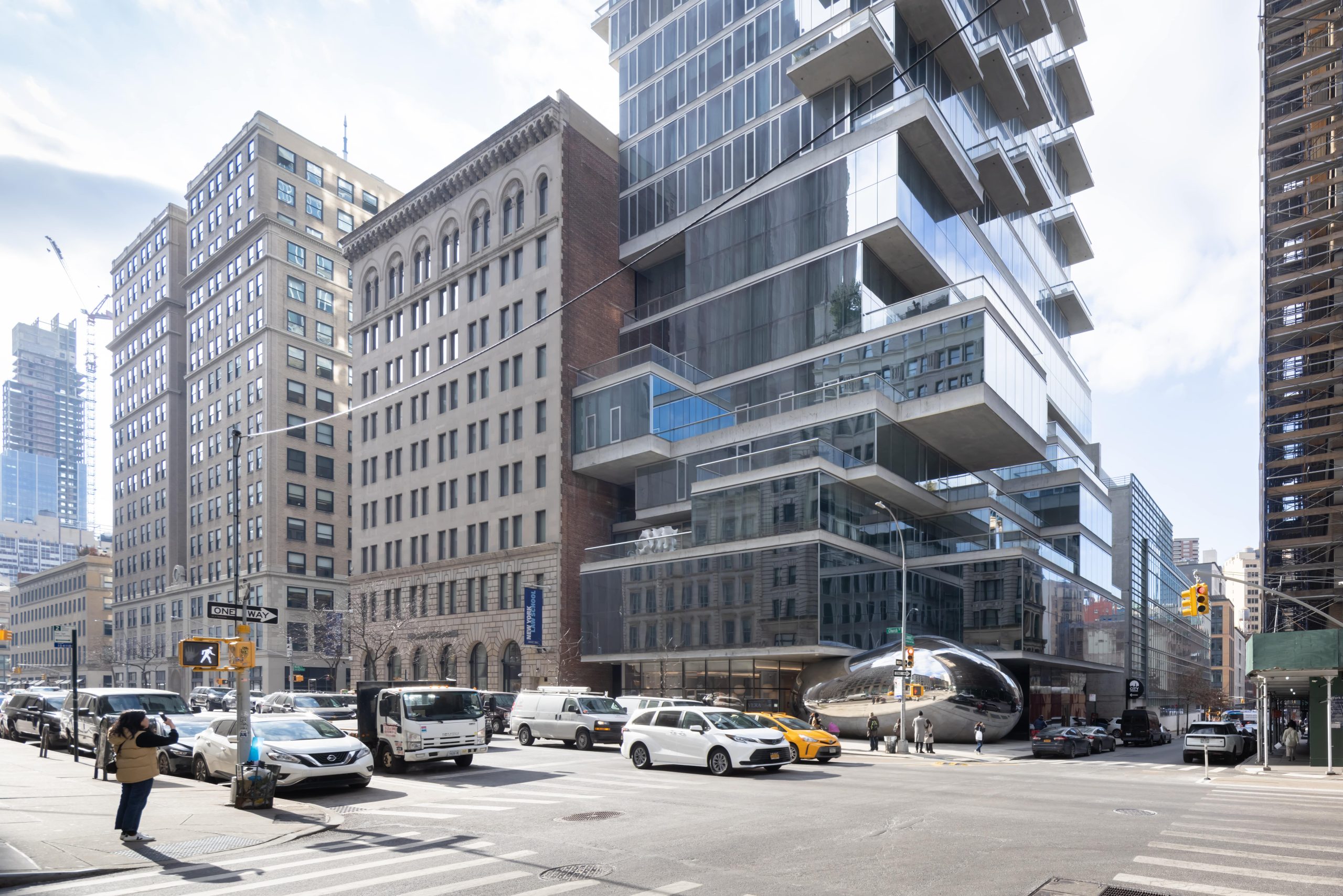
Public art as part of a luxury development?
While the “Cloud Gate” bean in Chicago is much beloved and popular by locals and tourists alike, the “legume being squashed by a luxury building” in New York City has yet to prove itself. ARTnews, for example, described the mini-Bean as “ugly” and criticised its connection to a private luxury tower. The bean had always been a part of the building plan. But while 56 Leonard Street was completed over five years ago, the technically challenged sculpture took much longer to open. Despite this long period, observers have noted that this mini-Bean is less elegant than Kapoor’s previous work.
There is another practical challenge for the mini-Bean now: Renderings of the sculpture show a gleaming, immaculate surface. In reality, the steel plates are already flecked with water stains. Workers are still figuring out how to best keep the sculpture clean.
At the same time, Anish Kapoor’s mini-Bean certainly has an effect on visitors. The stretched, distorted images give the impression that the sidewalk below is caving and buckling below the weight. And the many visitors show that despite being part of a luxury skyscraper, Kapoor has indeed created public art. Whether visitors actually want to admire the mini-Beam or mostly want to see themselves reflected in it is left to interpretation.












